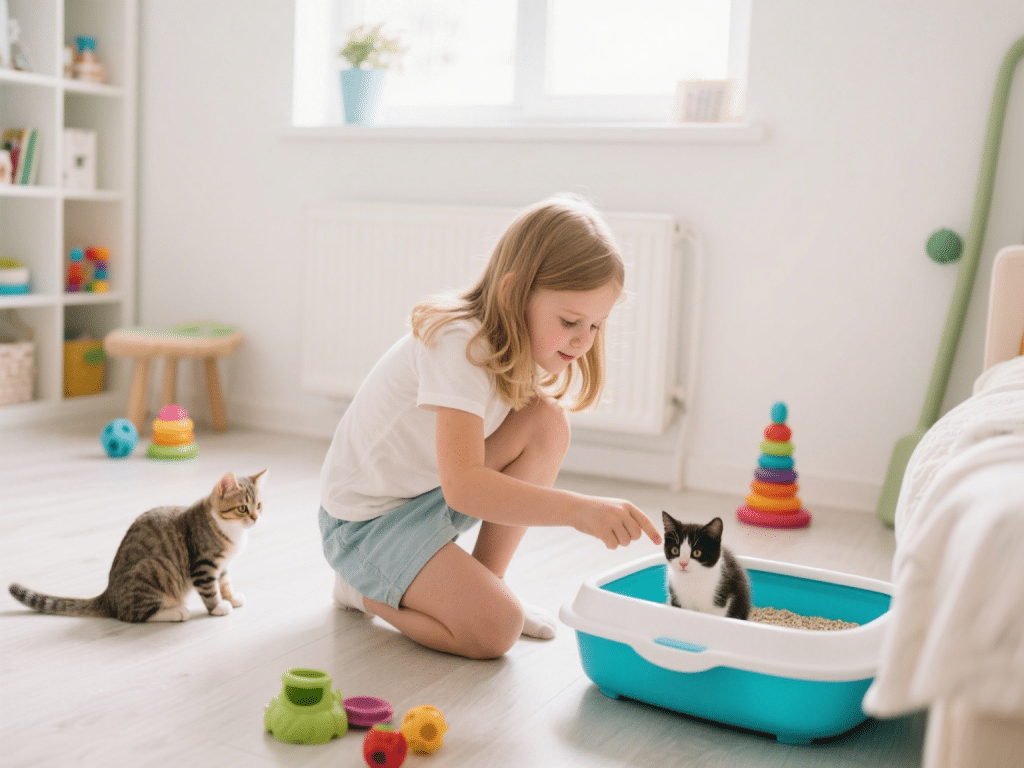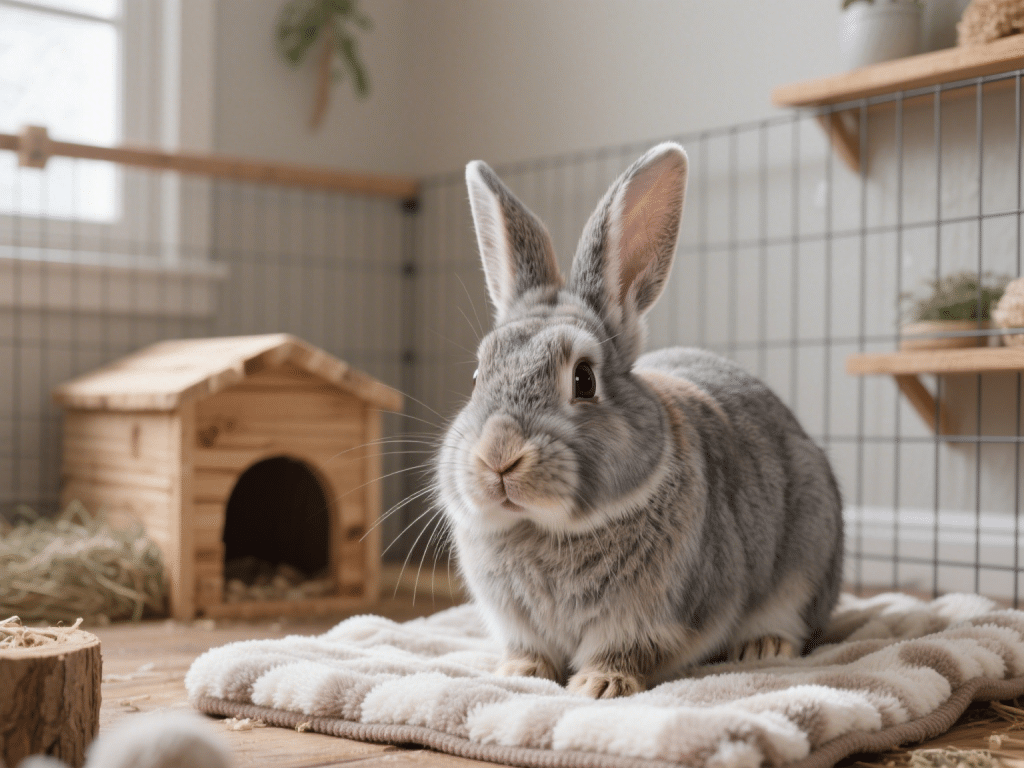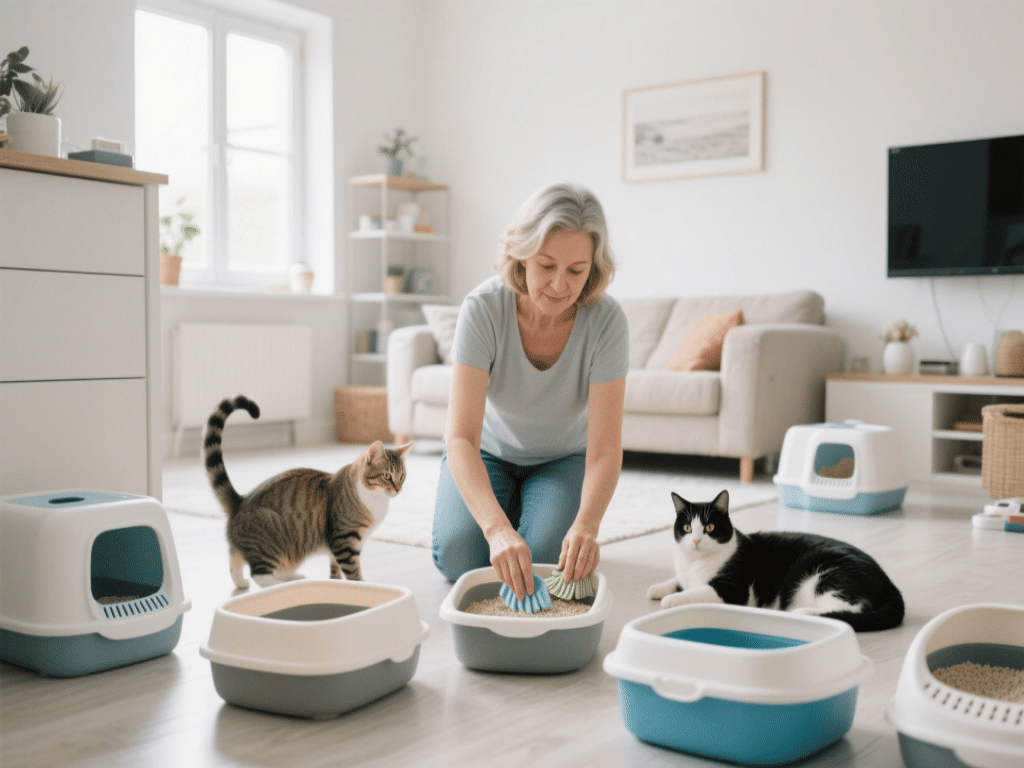
Introduction
Training kittens to use a litter box is a fundamental milestone for every cat owner. Early, positive reinforcement and proper setup can prevent behavioral issues and keep your home sanitary. This guide outlines essential steps, from selecting the right litter box to troubleshooting common challenges.
1. Choosing the Right Litter Box and Litter
Box Size and Accessibility: Select a shallow-sided box for kittens under eight weeks, so they can easily climb in and out. As the kitten grows, switch to a larger box with higher walls to contain litter scatter.
Litter Type: Use unscented, clumping litter with fine granules to mimic the texture of soil. Avoid dusty or scented varieties, as kittens have sensitive respiratory systems.
Number of Boxes: The general rule is one litter box per cat plus one extra. For multi-level homes, place boxes on each level to increase accessibility.
2. Proper Placement and Setup
Quiet, Consistent Location: Place the box in a low-traffic, quiet area away from food and water bowls. Avoid places with loud appliances or drafts.
Stable Environment: Keep the box in the same spot consistently. Moving it can confuse the kitten and delay training.
Litter Depth: Fill the box with about one to two inches of litter. Too little litter discourages digging; too much can be overwhelming.
3. Positive Reinforcement and Routine
Initial Introduction: Gently place your kitten in the litter box after meals, naps, and play sessions. Allow them to explore and dig naturally.
Reward System: Praise softly and offer a small treat immediately after successful use. Avoid scolding for accidents; instead, clean thoroughly and continue encouragement.
Regular Cleaning: Scoop waste at least twice daily and replace litter weekly. A clean box encourages consistent use.
4. Troubleshooting Common Issues
Accidents Outside the Box: If accidents occur, clean the area with an enzymatic cleaner to eliminate scent markers. Evaluate litter box placement and litter preference—some kittens are picky.
Avoiding the Box: If the kitten refuses to use the box, temporarily switch litter types or try a different box style (covered vs. uncovered). Ensure the box isn’t near loud noises or high-traffic zones.
Multi-Kitten Households: Some kittens may feel intimidated by litter box sharing. Provide multiple boxes in separate locations to reduce competition.
5. Transitioning to Adult Litter Habits
Gradual Box Upgrades: As kittens grow, gradually introduce higher-sided boxes. Monitor their ability to enter and exit comfortably.
Outdoor Access: If transitioning to an outdoor toileting routine, provide a designated outdoor litter area with loose soil or sand. Supervise initial outings until the kitten adapts.
Conclusion
Consistency, patience, and positive reinforcement are key to successful litter box training. By offering the right tools—a suitable box, quality litter, and a calm location—along with gentle encouragement, your kitten will quickly establish good toileting habits, leading to a harmonious home environment.









Comments on " Best Practices for Litter Box Training Kittens" :